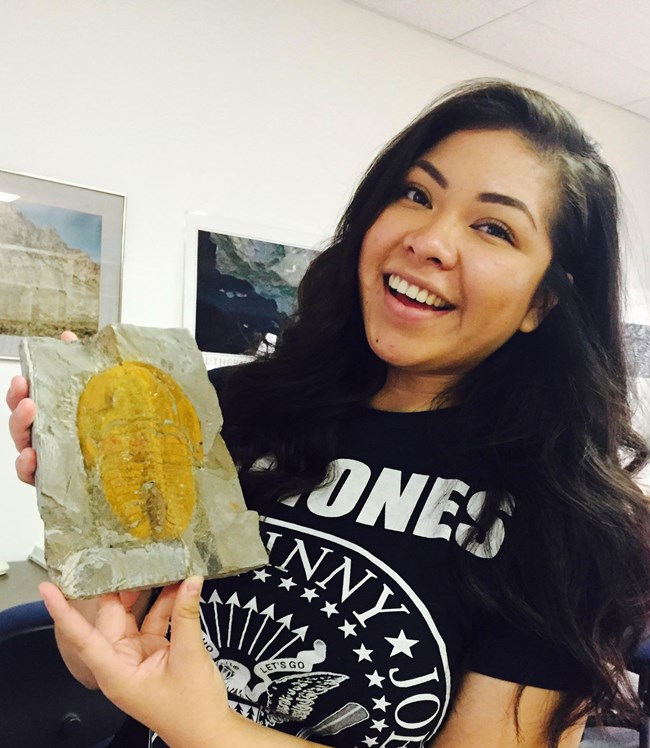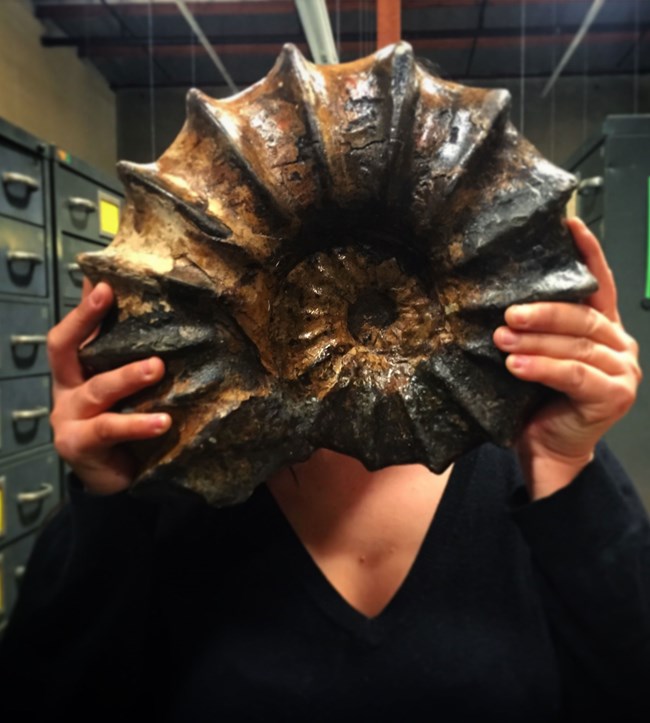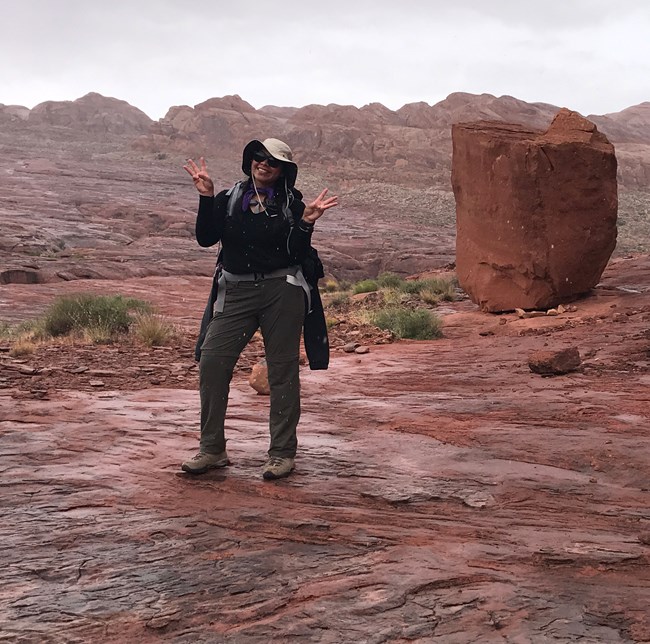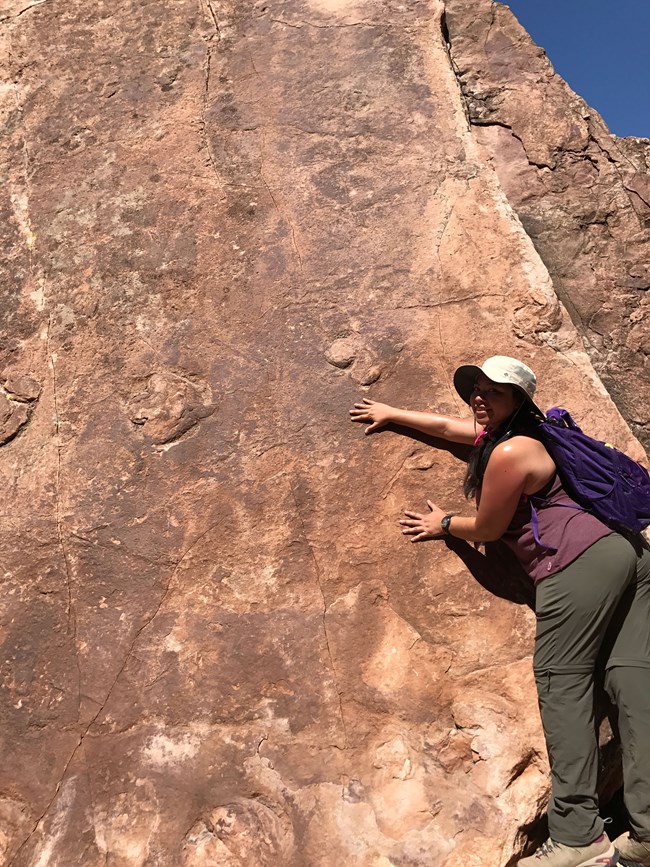Part of a series of articles titled Meet A Paleontologist.
Article
Maria Rodriguez, Glen Canyon National Recreation Area

Assistant Paleontologist/Museum Curator at National Park Service, Glen Canyon National Recreation Area, Page, Arizona
Please describe the type of work you do in paleontology:
As the sole paleontologist in Glen Canyon NRA, I am in charge of protecting all fossils found within the park. Part of my job is chasing dinosaurs by tracking their ~200 million year old footsteps! I keep records of all fossil localities and follow up with new fossil sites usually found by our Park visitors. I also work on curating specimens collected from the backcountry. I am fortunate to have the opportunity to handle all fossils we have brought in from in situ and send them to various institutions so researchers from all over the world can study them.

What are you working on now?
As lake levels drop in Lake Powell, underwater dinosaur sites become more accessible. Islands located within the park are main sources for fossil finds. This upcoming fall, I plan to continue my research on a dinosaur locality found on Antelope Island named Santucci’s Site. This site from the Jurassic Period is well known for well-preserved reptile tracks that are in pristine condition. Brasilichnium and Grallator are some of the tracks found on site and are visibly moving in different directions! I am also working on creating a new exhibit at our local visitor center based on a Eubrontes track found in the park. An exhibit would educate our visitors of the paleontological resources found in Glen Canyon NRA.

Where did you go to school? What were some of your favorite classes?
I attended California State University Dominguez Hills where I majored in Earth Science. My favorite classes were based around outdoor fieldwork. I loved anything that dealt with getting dirty and muddy. The classes I enjoyed the most were Field Mapping, Advance Research, and Earth’s History & Evolution. However, I earned all my paleontology experience after my undergrad. I was lucky to intern for the Natural History Museum of Los Angeles County (NHMLA) working under Dr. Austin Hendy in the department of Invertebrate Paleontology. That is where I fell in love with my two all-time favorite fossils: trilobites and ammonites! My academic career is not yet over! In the near future, I plan to pursue a master’s degree in paleontology.

Was there an experience you had that made you realize you wanted to be a paleontologist?
Growing up, my mother would often be upset with me for always wanting to be outside. I would dig in my backyard trying to find anything, but often times I would only come back with dirty knees. It wasn’t until I started as a student assistant in NHMLA where I found my love for fossils. Thereafter, I came to Glen Canyon NRA to chase Mesozoic dinosaurs. Working directly with fossils is a continuous reminder that I am in the right field.
What was your most memorable experience working with fossils?
I have so many great memories working with fossils inside and outside museums, but mainly I have the fondest memories of the paleo friends I’ve made. Working alongside prestigious scientists and learning from them drives my passion for discovery. Connecting with peers, colleagues and mentors allows me to gain valuable knowledge that can help me in the future. I have learned valuable lessons from scientists with an expertise in paleo ichnology, invertebrate and vertebrate paleontology. They have now become lifelong friends and valuable supporters of the work that I do in Glen Canyon NRA.
Do you have any advice for aspiring paleontologist?
If you love it, do it! Go outside, explore the unknown, ask questions, and get your hands dirty. There is so much out there to discover. Volunteer at your local museum, and don’t limit yourself. But most importantly, have fun!
Last updated: July 25, 2018
